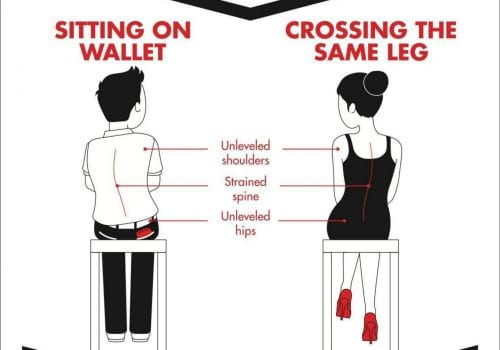Chiropractic and Wellness Care
5/8/202513 min read


Why Chiropractic Care Isn’t Just for Pain: The Benefits of Wellness Chiropractic in Columbia, SC
Soda City Chiropractic | Serving Columbia, West Columbia, Cayce, and Lexington
When most people think of visiting a chiropractor, they imagine someone in pain — maybe from a stiff neck, sore back, or recent car accident. But what if chiropractic care could help prevent pain before it starts and keep your body functioning at its best? At Soda City Chiropractic in Columbia, SC, we specialize in wellness-based chiropractic care designed not just to relieve pain but to enhance performance, mobility, and overall health.
1. Chiropractic Helps Maintain Proper Alignment and Posture
Even without pain, your spine can experience small misalignments from daily stress, long hours sitting, or repetitive movements. Over time, these subtle imbalances can affect how your body moves and functions.
Regular chiropractic adjustments help maintain proper spinal alignment, support healthy posture, and prevent issues like stiffness, fatigue, and joint degeneration before they become painful.
2. Improved Nervous System Function
Your spine protects your nervous system — the body’s communication highway. When vertebrae are misaligned, nerve signals can become interrupted, leading to decreased energy, slower recovery, or poor sleep.
Routine chiropractic adjustments help restore normal nerve flow, allowing your brain and body to communicate efficiently for better coordination, balance, and overall wellness.
3. Better Mobility and Athletic Performance
Whether you’re a runner, weightlifter, or just love staying active, chiropractic care supports joint flexibility and muscle balance. Studies show that chiropractic adjustments can improve reaction time, range of motion, and recovery after workouts. Many athletes rely on chiropractic not just for injury recovery, but for peak performance and prevention.
4. Reduced Stress and Improved Sleep
Spinal tension doesn’t just cause stiffness — it can trigger your body’s stress response. Chiropractic care promotes relaxation by releasing muscle tension and calming the nervous system. Many patients notice deeper sleep, better focus, and improved mood after regular wellness visits.
5. Preventive Health and Long-Term Function
Just like you don’t wait until your car breaks down to change the oil, your spine and nervous system benefit from consistent care. Wellness chiropractic helps prevent future injuries, slow spinal wear and tear, and maintain joint health. Patients who schedule regular visits often report feeling more energetic, mobile, and resilient to stress.
6. Support for Every Stage of Life
Chiropractic wellness care isn’t only for athletes or adults — it benefits everyone from infants and children to seniors. Pediatric adjustments support proper growth and development, while older adults often find improved balance and flexibility. Families across Columbia, Cayce, and Lexington trust Soda City Chiropractic to keep their spines — and lives — in alignment.
Experience the Difference at Soda City Chiropractic
At Soda City Chiropractic, we’re passionate about helping you live a pain-free, high-performing life through preventive and wellness-based chiropractic care.
Whether you’re currently pain-free or want to stay that way, we provide personalized adjustment plans designed to keep your spine strong, your nervous system healthy, and your body functioning at its peak.
📍 Located in Columbia, SC — proudly serving West Columbia, Cayce, and Lexington.
📞 Call today to schedule your wellness chiropractic appointment and experience the benefits of proactive spinal care.


How Chiropractic Helps with Extremity Joint Health
Chiropractic care is widely known for its focus on the spine, but it also plays a crucial role in treating joints outside the spine—known as extremities. Extremity adjusting involves the manipulation of joints in the arms, legs, hands, feet, shoulders, and hips. These joints are subject to stress, overuse, and misalignment, especially in physically active individuals or those with repetitive-motion jobs. Chiropractors trained in extremity adjusting use specific techniques to restore proper joint function, reduce pain, and improve mobility. According to the American Chiropractic Association, extremity manipulation can benefit conditions like tennis elbow, plantar fasciitis, and shoulder impingement (“Extremity Adjusting”).
Proper alignment of extremity joints is essential for biomechanical efficiency and injury prevention. When a joint is misaligned, it can lead to improper load distribution, resulting in pain, swelling, and eventual degeneration. Chiropractors identify restricted or hypermobile joints through detailed assessments and apply manual adjustments to correct these imbalances. A study published in the Journal of Chiropractic Medicine found that extremity adjustments significantly improved function and reduced pain in patients with shoulder and knee complaints (Hsieh et al.). This kind of care is especially valuable for athletes, workers, and older adults who experience joint dysfunction.
Chiropractors also use extremity adjustments to enhance the body’s kinetic chain—a concept that describes how joints and muscles work together in movement. Dysfunction in one joint can cause compensatory problems elsewhere in the body. For example, poor ankle mobility can lead to knee or hip strain. By addressing these root causes, extremity chiropractic care helps restore overall body mechanics. As noted by Palmer College of Chiropractic, treating extremities in conjunction with spinal adjustments ensures more comprehensive outcomes and long-term relief. This integrative approach often results in improved posture, reduced joint stress, and better overall coordination.
Additionally, extremity chiropractic care is a non-invasive and drug-free alternative to managing pain and mobility issues. This is particularly appealing for patients seeking holistic and preventative care. Chiropractors often complement adjustments with therapeutic exercises, stretching, and lifestyle guidance to promote healing and stability. According to Spine-health, extremity adjustments not only help manage current symptoms but can also prevent future injuries by correcting faulty movement patterns. As research and awareness continue to grow, extremity adjusting is becoming an integral part of chiropractic treatment plans for a wide range of patients.
Works Cited
American Chiropractic Association. “Extremity Adjusting: Treating Beyond the Spine.” ACA Today, https://www.acatoday.org/news-publications/extremity-adjusting. Accessed 12 May 2025.
Hsieh, Ching-Hua, et al. “Effectiveness of Chiropractic Extremity Adjustments in Managing Musculoskeletal Conditions.” Journal of Chiropractic Medicine, vol. 15, no. 3, 2016, pp. 205–210. https://doi.org/10.1016/j.jcm.2016.03.003.
Palmer College of Chiropractic. “Extremity Adjustments: Benefits and Techniques.” Palmer College, https://www.palmer.edu/articles/extremity-adjustments-benefits. Accessed 12 May 2025.
Spine-health. “Chiropractic Extremity Adjustments for Joint Pain.” Spine-health, https://www.spine-health.com/treatment/chiropractic/chiropractic-extremity-adjustments. Accessed 12 May 2025.
Wiese, Gabriel, et al. “Manual Therapy for Non-Spinal Joints: A Review of the Evidence.” Journal of Bodywork and Movement Therapies, vol. 22, no. 1, 2018, pp. 117–124. https://doi.org/10.1016/j.jbmt.2017.04.005.
You can find Soda City Chiropractic | A Columbia Chiropractor at:
2205 Main Street, Columbia, SC 29201
Email: dcarr@sodacitychiro.com
Phone: 803-966-7689
How Chiropractors Can Help with Allergies
While chiropractic care is most commonly associated with musculoskeletal issues, some patients and practitioners believe it can also provide relief from allergy symptoms. Allergies occur when the immune system overreacts to substances such as pollen, dust, or food, causing symptoms like sneezing, itching, and inflammation. The spine and nervous system play a crucial role in regulating immune function, and chiropractors focus on optimizing spinal alignment to support overall health. According to the American Chiropractic Association, proper spinal alignment can help ensure clear communication between the brain and body, potentially allowing the immune system to function more effectively (“Immune Function and Chiropractic”).
Chiropractic adjustments may help alleviate allergy symptoms by reducing stress on the nervous system. Misalignments in the spine, known as subluxations, can interfere with nerve signals and may contribute to heightened immune responses or histamine reactions. Some chiropractors report that adjustments to the upper cervical spine and thoracic region can improve respiratory function and reduce sinus congestion (Palmer College of Chiropractic). Though the exact mechanisms are still being studied, some patients experience decreased allergy symptoms and improved breathing following chiropractic care.
Additionally, chiropractors often take a holistic approach to health by offering lifestyle and nutritional advice that may benefit allergy sufferers. Recommendations might include dietary changes to reduce inflammation, supplementation to support the immune system, and stress management techniques. A study in the Journal of Vertebral Subluxation Research suggested that chiropractic care could influence immune markers, showing potential for broader health benefits beyond pain relief (Fleming). While more rigorous research is needed, these findings support a complementary role for chiropractic care in managing allergies.
Despite limited large-scale clinical evidence, many patients seek chiropractic care for allergy relief and report positive results. It is important to note that chiropractic treatment should not replace traditional allergy treatments but may be used as a supportive therapy. As research continues to explore the connections between the spine, nervous system, and immune function, chiropractic care may become a more recognized tool in allergy management. By supporting overall wellness and reducing nervous system interference, chiropractors can potentially help the body respond more appropriately to allergens (NCCIH; American Chiropractic Association).
Works Cited
American Chiropractic Association. “Immune Function and Chiropractic.” ACA Today, https://www.acatoday.org/news-publications/immune-function-and-chiropractic. Accessed 12 May 2025.
Fleming, Douglas R. “Chiropractic and Immune Function: A Review of the Literature.” Journal of Vertebral Subluxation Research, vol. 1, no. 4, 1997, pp. 1–8.
National Center for Complementary and Integrative Health. “Chiropractic: In Depth.” NIH, July 2022, https://www.nccih.nih.gov/health/chiropractic-in-depth.
Palmer College of Chiropractic. “Chiropractic and Allergies.” Palmer College, https://www.palmer.edu/articles/chiropractic-and-allergies. Accessed 12 May 2025.
Spine-Health. “How Chiropractic Care May Help the Immune System.” Spine-health, https://www.spine-health.com/blog/how-chiropractic-care-may-help-immune-system. Accessed 12 May 2025.


This image property of https://www.abccolumbia.com/2024/03/20/pollen-is-getting-worse/
You can find Soda City Chiropractic | A Columbia Chiropractor at:
2205 Main Street, Columbia, SC 29201
Email: dcarr@sodacitychiro.com
Phone: 803-966-7689


Chiropractic Care and Ménière’s Disease
Ménière’s disease is a chronic inner ear disorder characterized by episodes of vertigo, tinnitus, hearing loss, and aural fullness. While its exact cause remains unclear, emerging evidence suggests that chiropractic care, particularly upper cervical adjustments, may offer symptom relief for some patients.PubMedUpper Cervical Chiropractic of Monmouth+1PubMed+1
A notable case report detailed the treatment of a 40-year-old woman diagnosed with Ménière’s disease, who experienced significant improvement following chiropractic interventions. The patient's regimen included high-velocity, low-amplitude spinal manipulations targeting the upper cervical and thoracic spine, alongside soft-tissue therapies and stretching exercises. Within two weeks, her tinnitus resolved, and other symptoms, including vertigo and headaches, improved substantially over a three-month period. At a 2.5-year follow-up, she reported only occasional, mild episodes that were self-resolving or alleviated with further chiropractic care .riverfallsspine.com+3PubMed+3ScienceDirect+3
Another case involved a 59-year-old woman with Ménière’s disease who underwent Atlas Orthogonal chiropractic adjustments. Post-treatment, she experienced immediate resolution of vertigo, significant reduction in tinnitus, alleviation of brain fog, and restoration of hearing. These improvements persisted, enhancing her overall quality of life .vertebralsubluxationresearch.com
These cases underscore the potential of chiropractic care in addressing the musculoskeletal components that may influence Ménière’s disease symptoms. By correcting cervical spine misalignments, chiropractic interventions might alleviate nerve irritation and improve inner ear function. While these findings are promising, further research is essential to establish standardized treatment protocols and fully understand the efficacy of chiropractic care in managing Ménière’s disease.
Works Cited
Emary, Peter C. “Chiropractic Management of a 40-Year-Old Female Patient with Ménière Disease.” Journal of Chiropractic Medicine, vol. 9, no. 1, 2010, pp. 22–27.PubMed Central+2PubMed+2ScienceDirect+2
Belcher, Jason, and Nathanael Barnes. “Resolution of Ménière’s and Restoration of Hearing Following Reduction of Vertebral Subluxation Utilizing Atlas Orthogonal Chiropractic Adjustment: A Case Report.” Journal of Upper Cervical Chiropractic Research, 2022.vertebralsubluxationresearch.com
McCoy, Matthew. “Improvement in Ménière’s Disease Following Upper Cervical Chiropractic Care: A Case Report & Review of the Literature.” Journal of Upper Cervical Chiropractic Research, 2020.Upper Cervical Chiropractic of Monmouth+4riverfallsspine.com+4vertebralsubluxationresearch.com+4
Burcon, Michael T. “Cervical Specific Protocol and Results for 300 Patients with Ménière’s Disease.” Journal of Vertebral Subluxation Research, 2008.
Chung, Young H. “NUCCA Care: A Simple Solution to Ménière’s Disease.” NUCCA Wellness Clinic of Chicago, 2024.NUCCA Wellness Clinic of Chicago
“Case Studies on Upper Cervical Care and Ménière’s Disease.” San Jose Chiropractic, 2023.sanjosechirojax.comWrite your text here...
You can find Soda City Chiropractic | A Columbia Chiropractor at:
2205 Main Street, Columbia, SC 29201
Email: dcarr@sodacitychiro.com
Phone: 803-966-7689


Chiropractic Care for TMJ Disorders
Temporomandibular joint (TMJ) disorders involve dysfunction and pain in the jaw joint and surrounding muscles, often causing headaches, ear pain, and difficulty opening the mouth. Chiropractic care offers a non-invasive, drug-free approach by addressing spinal and craniofacial biomechanics and soft-tissue imbalances.
A meta-analysis of 20 randomized controlled trials found chiropractic interventions significantly reduced TMJ pain, improved maximum mouth opening, and enhanced disability scores. The most effective strategies involved cervical spine manipulation combined with manual mandibular therapy cjaonline.com.au+15bodiempowerment.com+15spinalresearch.com.au+15spinalresearch.com.au+7pmc.ncbi.nlm.nih.gov+7pdfs.semanticscholar.org+7. Similarly, a study of 14 TMD patients reported that chiropractic treatment—spinal adjustments, mandibular therapy, soft-tissue work, and rehabilitative exercises—led to meaningful symptom relief and improved jaw function .
Case reports also support chiropractic benefits. One 39-year-old woman achieved full TMJ symptom resolution after four weeks of integrated chiropractic therapy and maintained improvements six months later pdfs.semanticscholar.org+1researchgate.net+1. Another study described successful resolution of chronic TMD symptoms through upper cervical adjustment and postural realignment pmc.ncbi.nlm.nih.gov+14vertebralsubluxationresearch.com+14researchgate.net+14.
Manual soft-tissue therapy combined with therapeutic exercises decreased muscle tension and increased jaw mobility. A randomized controlled trial demonstrated improvements of roughly 6.6 mm in maximum opening and significant pain reduction after ten days of combined treatment compared to exercises alone head-face-med.biomedcentral.com.
In summary, chiropractic care—through spinal manipulation, mandibular therapy, soft tissue techniques, and exercise—can effectively alleviate TMJ disorder symptoms. While evidence includes robust trials and compelling case reports, further large-scale studies are needed to refine protocols. Still, current research supports chiropractic as a valuable, conservative option for TMJ management.
Works Cited
“Temporomandibular Disorder Treated With Chiropractic Therapy.” Cureus, 19 Mar. 2023, https://www.ncbi.nlm.nih.gov/pmc/articles/PMC10025577/ researchgate.net+2pmc.ncbi.nlm.nih.gov+2pdfs.semanticscholar.org+2
Yuill, E. and S. Howitt. “Chiropractic Treatment of Temporomandibular Dysfunction.” Altern Ther Health Med., vol. 14, no. 4, 2008, pp. 60–63. https://pubmed.ncbi.nlm.nih.gov/... cjaonline.com.au+13pmc.ncbi.nlm.nih.gov+13journal.parker.edu+13
Chu, Eric C. P., et al. “Temporomandibular Disorder Treated with Chiropractic Therapy.” Cureus, vol. 15, no. 3, 2023, e36377, https://www.ncbi.nlm.nih.gov/pmc/articles/PMC10025577 researchgate.net+2pdfs.semanticscholar.org+2pmc.ncbi.nlm.nih.gov+2
Paxton, Stephen W., and Michael Oppelt. “Resolution of Chronic Temporomandibular Disorder in a 36‑Year‑Old Female Following Chiropractic Care.” Journal of Upper Cervical Chiropractic Research, Oct. 2020. vertebralsubluxationresearch.com
Urbanski, et al. “Evaluation of Manual Soft Tissue Therapy and Therapeutic Exercises in TMD Patients.” Head & Face Medicine, 2023. bodiempowerment.com+4head-face-med.biomedcentral.com+4researchgate.net+4
You can find Soda City Chiropractic | A Columbia Chiropractor at:
2205 Main Street, Columbia, SC 29201
Email: dcarr@sodacitychiro.com
Phone: 803-966-7689


Wallets and your Spine!
Sitting on a bulky wallet in your back pocket may seem harmless, but it can lead to significant musculoskeletal and neurological issues that often present in chiropractic patients. When you sit unevenly, one hip becomes higher, causing your pelvis and spine to tilt. This can lead to chronic low back pain, sciatica, and postural imbalances. Chiropractors often identify wallet-induced pelvic tilt as a hidden culprit behind recurring spinal misalignment and compensatory muscle tension .
Scientific studies have validated these clinical observations. One investigation into wallet thickness revealed that sitting on a 22 mm–thick wallet caused pronounced lateral bending and spine flexion within just 15 minutes. Participants also reported increased gluteal discomfort, reinforcing the link between uneven seating and neuromuscular stress. This support aligns with the phenomenon known as “wallet neuritis” or “fat wallet syndrome,” where compression of the sciatic nerve leads to pain and tingling down the leg.
Chiropractic care addresses these issues through spinal realignment, pelvic stabilization exercises, and postural education. Oftentimes, simply advising patients to remove their wallet from the back pocket leads to noticeable relief. Over time, adjustments combined with lifestyle corrections help reestablish neutral pelvis and spinal posture, reducing nerve compression and restoring muscular balance .
In summary, carrying a wallet in your back pocket may seem trivial, but it can catalyze chronic back issues and nerve irritation. Chiropractors play a key role in diagnosing wallet-induced dysfunctions and resolving them through targeted care. For optimal spinal health, professionals recommend front-pocket wallets or minimalistic alternatives—and of course, tailoring patient habits to support long-term alignment and well-being.
Works Cited
“Wallet In Your Back Pocket Causing Your Back Pain?” Health‑Fit Chiropractic, n.d., [source] eatonchiropractic.com+2axesswallets.com+2vitalitypc.com+2modernchiropracticcenter.com+5healthfitchiro.com+5precisionspinalcare.com+5
“Why You Should Never Sit with Your Wallet in Your Back Pocket.” Modern Chiropractic Center, 3.1 yrs ago, [source] pmc.ncbi.nlm.nih.gov+15modernchiropracticcenter.com+15goldenchiro.net+15
“Wallet Sciatica | Spine Conditions | Lower Back Pain.” OrthoIndy Blog, 6 yrs ago, [source] blog.orthoindy.com+1healthfitchiro.com+1
De Carvalho, Diana E., et al. “The Effect of Wallet Thickness on Spine Posture, Seat Interface Pressure …” ResearchGate, 2014. researchgate.net+1datadrivenchiropractic.com+1
“The Wallet Syndrome.” NeuroFT, 3.5 yrs ago, [source] neuroft.com
“Don’t Sit on Your Wallet!” Golden Chiropractic, 11 months ago, [source] goldenchiro.net
You can find Soda City Chiropractic | A Columbia Chiropractor at:
2205 Main Street, Columbia, SC 29201
Email: dcarr@sodacitychiro.com
Phone: 803-966-7689


Chiropractic Care for Wellness: Your Columbia Chiropractor Near Me Guide
Chiropractic care in Columbia offers more than just pain relief—it supports whole-body wellness through alignment, preventive maintenance, and natural healing. Regular chiropractic adjustments help restore proper spinal and joint alignment, improving nerve function and facilitating the body's ability to heal and remain balanced. A Nordic study found that “Maintenance Care” reduced the number of days with low back pain compared to care-as-needed models, highlighting its role in ongoing wellness PMC.
Moreover, a broad wellness study in The Journal of Alternative and Complementary Medicine outlines how chiropractors can integrate clinical preventive screenings, nutritional advice, and ergonomic guidance, reinforcing holistic health and slowing musculoskeletal decline tnchiro.com. Community data supports these benefits—patients receiving regular chiropractic care report 31 % fewer doctor visits and spend 50 % less on healthcare costs, demonstrating its impact on well-being and healthcare affordability bestgrandrapidschiropractor.com.
Chiropractic wellness care also enhances immune function, flexibility, stress management, and mental clarity. Adjustments improve joint mobility and posture, reducing injury risk while promoting longevity. Studies have shown improved sleep, mood, and energy, along with meaningful drops in blood pressure and stress hormone levels drjoe.com+5drsupershouseofhealth.com+5watkinsvillechiropractor.com+5.
If you're searching for a Columbia chiropractor or a chiropractor near me, consider making chiropractic part of your wellness strategy—not just for pain relief but for proactive health maintenance. Long-term chiropractic care supports enhanced mobility, reduced inflammation, and sustained vitality—making it a smart investment in lifelong wellness.
Works Cited
Axén, I., et al. “Chiropractic Maintenance Care—What’s New? A Systematic Review.” Chiropractic & Osteopathy, vol. 26, 2018. PMC
Taylor, A., et al. “Study Outlines Benefits of Chiropractic Wellness Care.” The Journal of Alternative and Complementary Medicine, July 2021. tnchiro.com
“How Chiropractic Wellness Care Boosts Performance & Saves 50 %.” Best Grand Rapids Chiropractor, Dec. 2024. garronechiropractic.com+5bestgrandrapidschiropractor.com+5tnchiro.com+5
Dr. Joe. “The Benefits of Chiropractic Care for Overall Wellness.” Jan. 2025. drjoe.com
“The Proven Health Benefits of Chiropractic Care: Backed by Statistics.” The Chiro Health Center, Dec. 2024. thechirohealthcenter.com
You can find Soda City Chiropractic | A Columbia Chiropractor at:
2205 Main Street, Columbia, SC 29201
Email: dcarr@sodacitychiro.com
Phone: 803-966-7689
